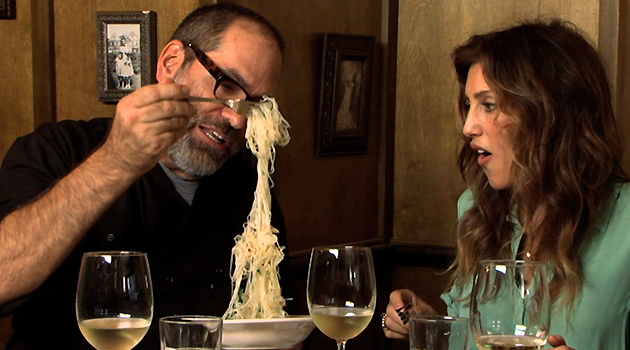The Chef who Slammed Himself: Giving Your Company Bad Reviews

Here at MarketPlace, we often beat the drum in favor of greater transparency on the part of food companies. New York chef and restaurateur Frank Prisinzano is taking the principle as far as about anyone we’ve seen by posting critical reviews of his own restaurants to Instagram. Prisinzano’s reviews are relatively mild, but they do pick on real flaws, like a misshapen burger or missing croutons. It seems to be going mildly well for Prisinzano so far: comments from his followers are overwhelmingly positive, and the move has even landed him a couple of media mentions. We suspect this isn’t a strategic decision so much as an experiment; the posts don’t have the feel of calculated marketing materials, but something more off the cuff. But if a company were to try this tactic in a more strategic fashion, posting its own negative reviews, would it be effective? Let’s evaluate Prisinzano’s reviews as a marketing technique and see how it might perform.
First let’s consider some of the potential pitfalls. The first and biggest issue in Prisinzano’s case has to be the potential effects on his employees. A review of a restaurant is necessarily evaluating the job done by its staff on one particular night, and by posting these criticisms publicly, Prisinzano risks alienating the people who work for him. That’s not an objection to the tactic as such, since such issues could be avoided by employers who know how best to manage their relationships with staff and by proper handling of tone in the review itself. We can’t know how that’s gone for Prisinzano, but his reviews do feel polite, and each speaks directly to the chef at the restaurant in question (using their Instagram usernames) with an offer to discuss the review, so by all external appearances he seems to be handling it well.
A second concern that some in the food industry might have has to do with the inherent risks of transparency: by pointing out flaws in his own product, Prisinzano may make those flaws more apparent for the consumers. I can think of two immediate responses to this. First, Prisinzano obviously didn’t point out major, endemic flaws (bad ingredients or an awkward service flow), focusing instead on minor problems in execution. Highlighting those errors isn’t harmful because the audience can reasonably expect that they will be corrected. Second, the praise his reviews have brought to Prisinzano shows—if only on a small scale—that transparency is welcomed by consumers (customers). The sight of a company critiquing its own work only makes customers feel better about the product in the majority of situations. For that reason, Prisinzano had nothing to fear from transparency.
So if we’ve established that Prisinzano’s critical reviews of his restaurants likely aren’t bad for business, we can then ask the complementary question: are they valuable? Do they offer marketing benefits? One benefit is obvious, and that’s the media coverage the stunt has drawn: even though it’s relatively minor, it’s publicity, which is typically a great benefit for restaurants. With a more integrated and higher-profile campaign, such a program of reviews could be even more beneficial, resulting in positive feelings about the brand and media coverage for the strange spectacle of a company publicly critiquing itself. If your company is inspired by the Prisinzanos of the world to build positive brand equity through transparency, give us a call. We’re always thinking about new strategies to improve food and beverage marketing through transparency, and we’d love to consult with you.
